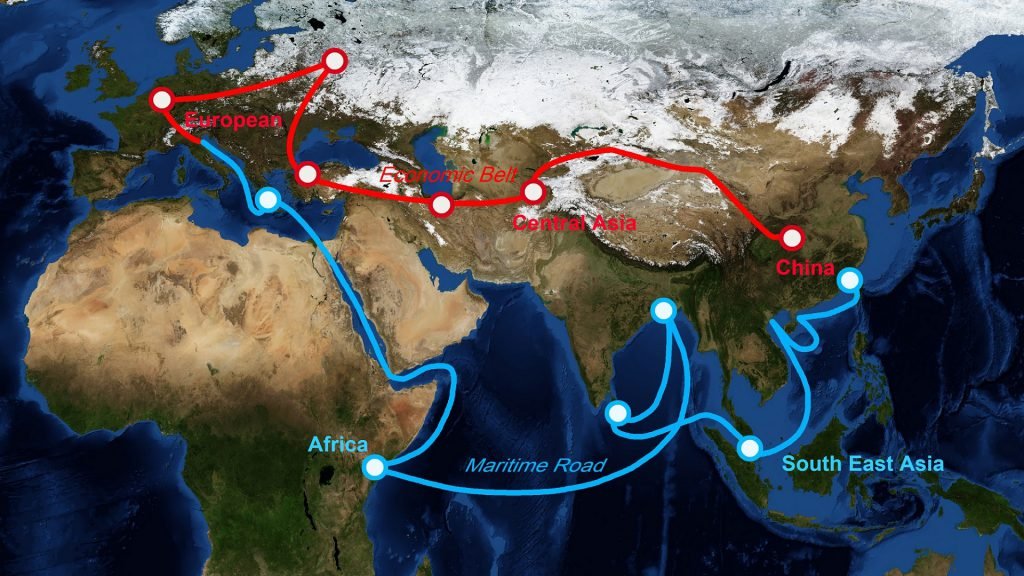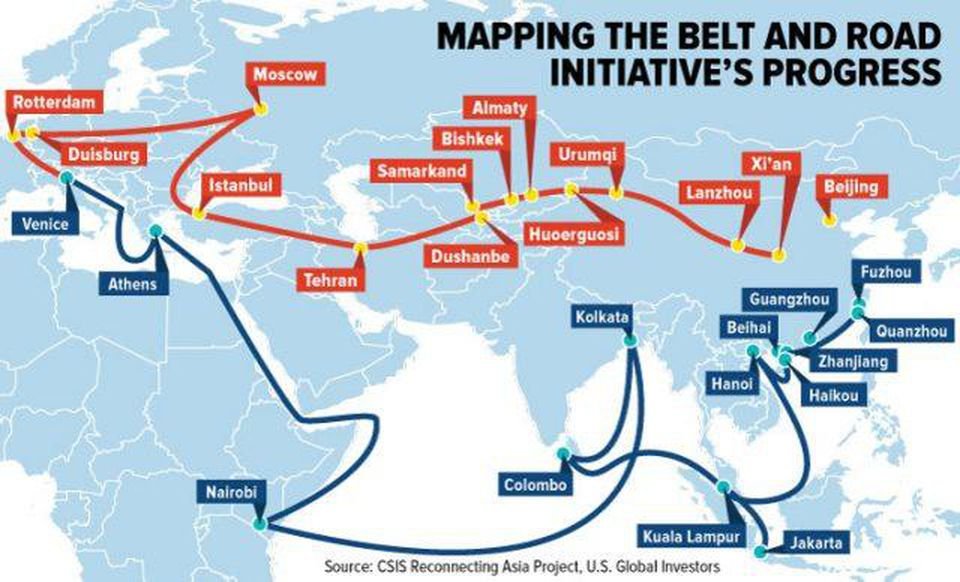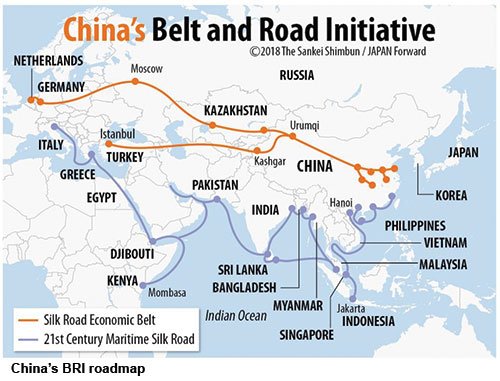The Belt and Road Initiative (BRI), proposed by Chinese President Xi Jinping in 2013, is a monumental infrastructure and economic development strategy aimed at fostering connectivity and cooperation between countries across Asia, Africa, and Europe. This ambitious initiative seeks to revive ancient trading routes, enhance economic integration, and promote mutual development through a network of infrastructure projects spanning land and sea.
The BRI encompasses various components, including the Silk Road Economic Belt and the 21st Century Maritime Silk Road, collectively known as the “Belt and Road.” These initiatives aim to improve trade and investment flows, infrastructure development, financial integration, and people-to-people exchanges among participating countries.
At its core, the Belt and Road Initiative represents China’s vision of reshaping global economic governance and enhancing its influence on the international stage. China seeks to bolster its economic ties with participating nations through infrastructure investments, trade agreements, and diplomatic engagements while promoting its political and strategic interests.

key Features of The Belt and Road Initiative
- Infrastructure Development: One of the primary objectives of the BRI is to build infrastructure networks, including roads, railways, ports, airports, and energy pipelines, to facilitate trade and connectivity among participating countries. These projects aim to reduce transportation costs, enhance logistical efficiency, and promote economic development in regions lacking adequate infrastructure.
- Trade and Investment: The BRI seeks to stimulate trade and investment by reducing barriers and enhancing cooperation between participating countries. By promoting trade liberalization and facilitating investment flows, China aims to create new markets for its goods and services while providing opportunities for other countries to benefit from increased economic engagement.
- Financial Connectivity: The BRI includes initiatives to improve financial connectivity through the establishment of multilateral financial institutions, currency swap agreements, and infrastructure investment funds. These measures aim to facilitate cross-border capital flows, support infrastructure financing, and promote the internationalization of the Chinese yuan.
- Policy Coordination: The BRI emphasizes policy coordination among participating countries to address regulatory barriers, harmonize standards, and facilitate cross-border cooperation. By promoting policy dialogue and coordination, China aims to create a conducive environment for investment and trade while addressing challenges related to governance, legal frameworks, and institutional capacity.
- People-to-People Exchanges: In addition to infrastructure and economic cooperation, the BRI aims to promote cultural and educational exchanges, tourism, and interpersonal connections among participating countries. These efforts aim to foster mutual understanding, strengthen social ties, and promote cooperation in areas such as education, science, and technology.
- Environmental Sustainability: The BRI includes initiatives to promote environmental sustainability and address ecological concerns associated with infrastructure development. China has pledged to incorporate green principles into BRI projects, including energy efficiency, pollution control, and sustainable resource management, to minimize adverse environmental impacts and promote sustainable development.
- Geopolitical Implications: The BRI has significant geopolitical implications, shaping regional dynamics and influencing global economic governance. As China expands its economic influence through infrastructure investments and trade agreements, it seeks to enhance its strategic position and counterbalance the influence of other major powers, such as the United States and Europe, in regions of strategic importance.

Criticism and Challenges of BRI
While the Belt and Road Initiative has attracted considerable attention and investment, it has also faced criticism and encountered various challenges:
- Debt Sustainability: Critics argue that BRI projects may exacerbate debt burdens in participating countries, particularly in low-income and developing economies, leading to debt distress and dependency on Chinese financing. Concerns have been raised about the transparency, terms, and conditions of Chinese loans, as well as the potential for debt-trap diplomacy and strategic leverage.
- Environmental and Social Risks: BRI projects have raised concerns about their environmental and social impacts, including deforestation, habitat destruction, displacement of communities, and labor rights violations. Critics argue that inadequate environmental and social safeguards, as well as weak regulatory oversight, could lead to negative consequences for local communities and ecosystems.
- Geopolitical Tensions: The BRI has fueled geopolitical tensions, particularly between China and other major powers, such as the United States, India, and Japan. Critics view the BRI as a vehicle for expanding Chinese influence and challenging the existing international order, leading to competition, strategic rivalries, and security concerns in regions where China’s interests intersect with those of other powers.
- Transparency and Governance: Transparency and governance issues have plagued some BRI projects, with concerns raised about corruption, lack of accountability, and opaque decision-making processes. Critics argue that the lack of transparency in project financing, procurement, and implementation could undermine the effectiveness and sustainability of BRI initiatives, as well as erode public trust and confidence.
- Debt Trap Diplomacy: There are concerns that China may use its economic leverage to advance its strategic and political interests through debt-trap diplomacy, whereby countries heavily indebted to China become vulnerable to political pressure and influence. Critics warn that unsustainable debt burdens could compromise the sovereignty and independence of participating countries, leading to economic dependency and strategic concessions to China.
- Security Risks: BRI projects in regions prone to conflict or instability, such as Central Asia, the Middle East, and Africa, face security risks related to terrorism, insurgency, and political violence. Security challenges could disrupt project implementation, increase costs, and undermine investor confidence, posing significant risks to the success and sustainability of BRI initiatives.
- Ethical Concerns: The BRI has raised ethical concerns related to human rights, labor standards, and environmental protection. Critics argue that Chinese companies involved in BRI projects may disregard international norms and standards, leading to human rights abuses, labor exploitation, and environmental degradation. Ensuring adherence to ethical principles and promoting responsible business practices is essential to address these concerns and safeguard the rights and well-being of affected communities.

Despite these criticisms and challenges, the Belt and Road Initiative continues to evolve and expand, shaping the economic, political, and strategic landscape of the regions it encompasses. As China seeks to advance its vision of shared prosperity and cooperation through infrastructure development and connectivity, addressing the concerns and challenges associated with the BRI will be crucial to realizing its potential benefits and fostering sustainable development for all participating countries.
The Belt and Road Initiative represents a complex and multifaceted strategy with far-reaching implications for global governance, economic development, and geopolitical dynamics. While it holds the promise of fostering connectivity, promoting economic integration, and spurring development across regions, it also faces numerous challenges and criticisms that must be addressed to ensure its effectiveness, sustainability, and positive impact on the participating countries and the global community as a whole.
